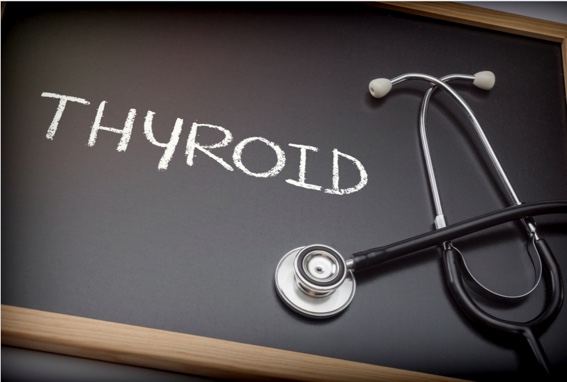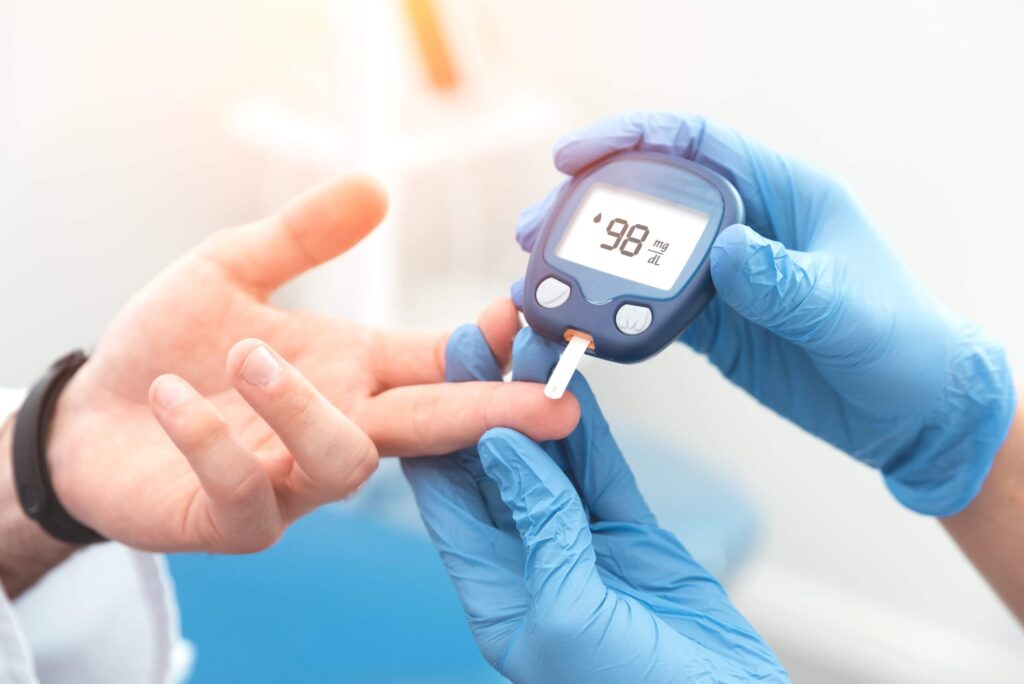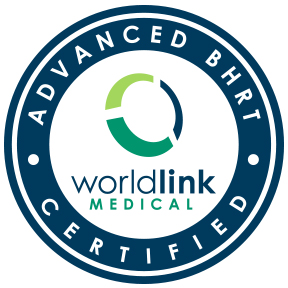Patients previously treated with DTE, when switched to levothyroxine (T4), occasionally did not feel as well despite adequate dosing.
Those patients who preferred DTE lost 4 pounds during the DTE treatment, and their subjective symptoms wee significantly better while taking DTE as measured by the general health questionnaire and thyroid symtpom questionnaire.
DTE caused modest weight loss and nearly half (48.6%) of the study patients expressed preference for DTE over T4.
Although most endocrinologists recommend synthetic L-T4 for the treatment of hypothyroidism, a common endocrine disorder, there is still uncertainty regarding combination synthetic levothyroxine/liothyronine (T4/T3) therapy and desiccated thyroid therapy.
Many patients claim that they do not feel as well when being sweitched from DTE to T4 therapy
DTE is now standarized (USP).
In a subgroup analyses of this study, their subjective symptoms, such as concentration, memory, sleep, decision-making capability, happiness, and energy level, were significantly better while taking DTE.
* Treatment for primary hypothyroidism: current approaches and future possibilities
There are a large number of people with this condition who are suboptimally treated. Even in those people with hypothyroidism who are biochemically euthyroid on levothyroixine replacement, there is a signficant proprotion who report poorer quality of life.
Levothyroxine (L-T4) therapy is based on the assumption that the conversion of T4 into T3 provides adequate amounts of active hormone at target tissues.
L-T3 resulted in significant weight loss and decrease in total cholesterol, decrease in low-density lipoprotein-cholesterol, and a decrease in apolipoprotein B.

The substitution of L-T3 for L-T4 at equivalent doses (relative to the pituitary) reduced body weight and resulted in greater thyroid hormone action on the lipid metabolism.
This study compared combined treatment with LT4 and LT3 in a ratio of 5:1 or 10:1 with LT4 monotherapy.
Decrease in weight, but not decrease in serum TSH was correlated with increased satisfaction with study medication. Of the patients who preferred combined LT4/LT3 therapy, 44% had serum TSH less than 0.11 microU/ml. Patients preferred combined LT4/LT3 therapy, but changes in mood, fatigue, well-being, and neurocognitive functions could not satisfactorily explain why the primary outcome was in favor of LT4/LT3 combination therapy.
* Is a Normal TSH Synonymous with ‘Euthryoidism’ in Levothyroxine Monotherapy?
NHANES participants with normal serum TSH levels on LT4 monotherapy exhibit lower serum T3:T4 ratios than healthy euthyroid controls. LT4 treated individuals have higher Body Mass Index despite reporting lower calories intake corrected by body weight, report lower physical activity levels, and are more often taking statins, beta-blockers and antidepressants.

* Hypothyroidism & Atherosclerosis
In one uncontrolled study, desiccated thyroid was given to 347 patients with documentation of or a high risk for atherosclerosis, 81% of whom were euthyroid before treatment. 70% of those with preexisting angina actually reported subjective benefit from desiccated thyroid therapy.
For 125 years, physicians have appreciated that there is a relationship between hypothyroidism and atherosclerosis. Our growing understanding of thyroid hormone’s regulation of: 1) lipid and homocysteine metabolism, 2) effects on vascular reactivity and blood pressure, & 3) modulation of other atherosclerotic factors, now provide partial explanations for ow hypothyroidism predisposes patients to cardiovascular disease.

After one year of euthyroidism (balanced thyroid), 34 out of 35 patients showed a significant decrease of the common carotid artery intima-media thickness (in other words….they had an increased risk for a stroke). The study demonstrated that L-T4 treatment might have the potential to reverse the progression of atherosclrosis in hypothyroid patients. Furthermore, it suggests that increased levels of LDL cholesterol have an important role in the increased common carotid intima-media thickness.
Thyroid hormone replacement resulted in regression of the increased carotid artery-intima media thickness (C-IMT) which was attributed to the improvement in the lipid profile. Thus regression of the C-IMT can be achieved by improving the atherogenic lipid profile, especially the LDL-cholesterol level.
Thus, regression of the C-IMT can be achieved by improving the atherogenic lipid profile, especialy the LDL-choleserol level.

High affinity uptake of serum-derived low density lipoprotein (LDL) cholesterol is accomplished through the LDL receptor in the liver. Thyroid hormone depletion leads to decreased LDL receptor expression and elevated serum cholesterol.
The inverse correlation between serum levels of cholesterol and thyroid hormone (TH) has been known from clinical observations that date back over 70 years.
More recent studies indicated that low LDL-cholesterol uptake in hypothyroid patients is stimulated by thyroid hormone treatment, and studies in experimental animals have established that the levels of LDL receptor mRNA and protein in the liver are directly associated with serum thyroid hormone levels.
The biological effects of thyroid hormone are through hormone-dependent changes in gene expression. These results form the basis for a model to account for hypothyroid-linked hypercholesterolemia. The model predicts that as thyroid hormone levels fall SREBP-2 levels decline followed closely by a drop in LDL receptor mRNA. This results in a decline in high affinity LDL cholesterol uptake in the liver resulting in hypercholesterolemia, which is fundamentally linked to thyroid hormone status.
Hypothyroid humans have increased serum LDL cholesterol and reduced LDL uptake that can be reversed by adding T3. Thus, these studies clearly establish an indirect mode of regulation for the LDL receptor by T3.
Evidence of an association between subclinical hypothyroidism and cardiovascular disease is mounting. The impact of thyroid hormone on lipid levels is primarily medicated through triiodothyronine (T3)-bound thyroid protein binding. Thus, the decreased T3 seen in hypothyroidism may result in increased serum cholesterol.
Current data suggests that normalizing even modest thyroid-stimulating hormone elevations may result in improvement in the lipid profile. As essential elements of DNA-binding proteins that regulate transcription, thyroid hormones influence the utilization of essentially all substrates, vitamins, and hormones. The symptoms include fatigue, depression, and unexplained moderate weight gain. Recent studies have suggested that even mild thyroid disease can affect the metabolism of cholesterol.
Replacement doses of T3 sufficient to return serum levels to normal enhanced left ventricular function and normalized expression of T3-responsive genes, thus supporting the potential therapeutic utility of T3 replacement in this setting.

The fact that L-T replacement therapy was able to improve both the atherogenic lipoproein profile and intima-media thickening (IMT) suggests that lipid infilration of arterial wall may represent a major mechanism underlying IMT increase in subclinical hypothyroidism.
This meta-analysis indicates the L-T4 treatment of subclinical hypothyroidism patients can reduce carotid-intimia-media thickness (C-IMT), possibly as a result of the reduction of total cholesterol, triglyceride, low density lipoprotein, systolic blood pressure, diastolic blood pressure, lipoprotein(a) and flow-mediated dilation. Decreased C-IMT was observed in subclinical hypothyroidism patients after long-term L-T4 treatment.

Evidence of an association between subclinical hypothyroidism and cardiovascular disease is mounting. The impact of thyroid hormone on lipid levels is primarily medicated through triiodothyronine (T3)-bound thyroid protein binding. Thus, the decreased T3 seen in hypothyroidism may result in increased serum cholesterol.
Current data suggests that normalizing even modest thyroid-stimulating hormone elevations may result in improvement in the lipid profile. As essential elements of DNA-binding proteins that regulate transcription, thyroid hormones influence the utilization of essentially all substrates, vitamins, and hormones. The symptoms include fatigue, depression, and unexplained moderate weight gain. Recent studies have suggested that even mild thyroid disease can affect the metabolism of cholesterol.
Replacement doses of T3 sufficient to return serum levels to normal enhanced left ventricular function and normalized expression of T3-responsive genes, thus supporting the potential therapeutic utility of T3 replacement in this setting.
This meta-analysis shows that thyroxin therapy in subjects with subclinical hypothyroidism signifcantly decreases carotid intima-media thickness and improves lipid profile. It may play a role in slowing down of preventing the progression atherosclerosis.
* Effects of Thyroid Dysfunction on the Severity of Coronary Artery Lesions and its Prognosis
The prevalence of coronary heart disease in low T3 syndrome group and hypothyroidism group was significantly higher than that in the euthyroid group.
Multinomial logistic regression analysis demonstrated that low T3 syndrome was an independent risk factor of coronary artery moderate (OR=4.268) and severe (OR=4.294).
Incidence of composite end point (all-cause death, nonfatal myocardial infarction and coronary revascularization) was significantly higher in low T3 syndrome group.
The patients with hypothyroidism and low T3 syndrome had a high prevalence of coronary heart disease, including severity of coronary artery lesions, and poor prognosis. The reason could be dyslipidemia and endothelial dysfunction affected by thyroid hormone.
Several studies also have pointed out that serum FT3 levels were inversely correlated with carotid atherosclerosis and low serum FT3 was an important determinant of carotid atherosclerosis.
In addition to dyslipidemia, hypothyroidism may also lead to endothelial dysfunction, hypercoagulability, impaired fibrinolysis, hyperhomocysteinemia, systemic inflammation, and platelet abnormalities.
It has been found that T3 levels within the physiological range were inversely correlated with the presence and severity of coronary heart disease (CHD).
The lower FT3 levels were associated with the presence and severity of CHD.
Low T3 syndrome had a significantly worse prognosis both for the overall and cardiac death as compared to euthyroidism.
Additionally, low T3 had an independent prognostic value for total mortality.
TSH and free T4 within the normal range are associated with the metabolic syndrome. The sample half-below the TSH median (with probably higher functional thyroid status) exhibited better metabolic and cardiovascular profiles. Thus “normal” is NOT “Optimal.”
Results demonstrated that subclinical hypothyroidism was significantly associated with a higher risk of metabolic syndrome.

The prevalence of metabolic syndrome increased with higher TSH within the euthyroid range, mostly by an increase in the dyslipidemia.
There is little doubt as to the detrimental effect of the metabolic syndrome on health. Hypothyroidism is one of the most common endocrine disorders and numerous studies have found an association with atherosclerotic artery disease. . A positive association of TSH and serum lipids was observed in euthyroid subjects.
Similar associations of TSH within the normal range have been found with insulin sensitivity and abdominal obesity. Two recent studies found an association of thyroid function tests in the euthyroid range with certain elements of the metabolic syndrome in post menopausal women.
The results of this cross-sectional study demonstrated a significant association between the TSH within the reference range for euthyroidism and the metabolic syndrome. Furthermore, TSH was positiviely associated with hyper triglyceridemia and to a lesser degree with the prevalence of low HDL-C. The trend towards an increase in the cholesterol and triglyceride levels with increasing TSH was demonstrated. The authors demonstrated that a shift in the lipid particle sizes towards a less atherogenic profile also occurred with decreasing levels of TSH.
* Small doses of triodothyronine can change some risk factors associated with abdominal obesity
(This study showed that administration of small doses of T3 can increase the concentration of SHBG, as there was a significant decrease (by 36%) of T4 and parallel increase of T3 with a clear increase of T3/T4 ratio. A lower peripheral deiodination of T4 might be a factor contributing to the low SHBG concentration in abdominal obesity. Treatment with small doses of T3 may be considered to ameliorate some of the risk factors associated with abdominal obesity, particularly in some subgroups of obese women with a relative resistance to thyroid hormones dependent on decreased peripheral deiodination of thyroxine.)

* Thyroid function and risk of type 2 diabetes: a population-based prospective cohort study
Low and low-normal thyroid function are risk factors for incident diabetes, especially in individuals with prediabetes.
Overall, higher levels of thyroid-stimulating hormone were associated with higher diabetes risk, and higher levels of fee thyroxine were associated with a lower diabetes risk.
The risk of progression from prediabetes to diabetes was 1.4 times higher in the highest tertile of TSH within the normal range of thyroid function compared with the lowest tertile for TSH.





Treat the whole person, not just the symptoms. Look for the root cause, together. Give you what you need, and take away what you don’t to allow your body to heal itself: “Get Healed Naturally.” Let’s get you tuned up, feeling younger, healthier, happier, more alive and vital, and harmoniously dancing your way through life again.
© 2025 Vital Health Solutions, Vital Health Drips & Vital TRT are DBAs of HealthSteps Rx, Inc. All Rights Reserved.